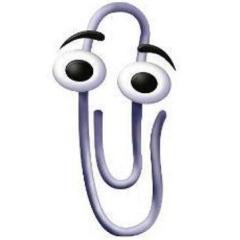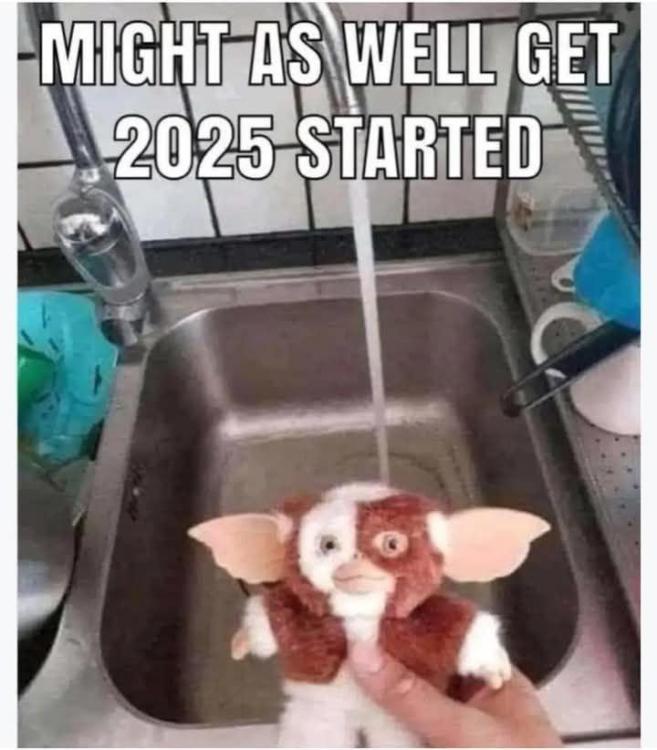-
Posts
1,932 -
Joined
-
Last visited
Content Type
Profiles
Forums
Events
Blogs
Gallery
Everything posted by billybopp
-
My first rock concert was Ted Nugent in 1980. We rolled down the windows on the drive home, and it took a minute or so to realize we couldn't hear any wind noise! I'm convinced my hearing still isn't entirely back to what it was before! Does that count?? -Bill
-
It can take several runs of clean water through an airbrush to clean it. Clean immediately after using the airbrush. Dyes usually have alcohol in them as a carrier for pigments, and alcohol can degrade o-ring seals in the airbrush over time. A little isopropyl to clean the airbrush is fine, but again - don't let it sit with it in contact with rubber parts. Dye sitting in the airbrush works can evaporate quickly, leaving pigment behind. What I usually do is clean immediately after use with alcohol, followed by water. If the airbrush is to sit for any length of time, I disassemble it and use an inexpensive ultrasonic cleaner with water and a drop of soap to clean, then put the parts out to let them dry. If the above cleaning tactics don't work, you may need to use the ultrasonic bath more often. - Bill
-
One of the reasons I've always preferred to do as much of the maintenance on my cars as I could manage is that professional mechanics have nearly killed me twice. Once was a 1976 Ford Fiesta (a BLAST of a little car to drive!). I was in college and didn't have time to replace rear brake shoes, so took it to Ford - I even warned them that the adjusters were finicky on that car and had to be manually adjusted pretty tight. They didn't listen. On the drive home from the dealership, a semi pulled out in front of me on a two lane road, and the brake pedal went to the floor. Fortunately, I managed to slow by downshifting, and there was just enough berm for me to get over on. But my hands were shaking when I got home. The other was a 1968 Buick LeSabre that needed some steering work. Not something that my dad nor I had ever done and didn't have the specialized tools for, so we took it to the dealership. We could have bought the tools and a repair book for what they charged, but didn't really want a single purpose tool lying around, and didn't know for sure how to do the job. We pulled out to go home, and steering worked one direction but not the other. Took it right back by circling the block. They forgot to tighten something or other. Lessons learned.
-
Very cool!!! That Super Bird would be worth something like half a million dollars now!!
-
Oh yeah. Spitfires were a TON of fun to drive, but they could be a nightmare to fix sometimes. Same can be said for a lot of European sportscars of the era. Back in the 80s, a roommate had a '72 or '73 Spitfire, which I got roped into fixing a time or two. I had a '73 Fiat Spyder which was just a blast to drive, but a bit of a nightmare to fix. I also had a '69 911S which was a fun challenge to drive. Thankfully I never had to do major repairs on the 911, but eventually rust caught up with it which was way beyond my ability & budget to fix properly. - Bill
-
When they say "Never do anything that you can't undo" ... I don't think this is what was intended! Seriously tho, that sux. But welcome back, and thanks for the suggestion! Over the years, I've picked up a number of "coloring books" to use as tooling patterns. If the size isn't quite what I'm looking for, I've got a scanner/printer/copier that I can use to scan and re-size to fit the space needed. For somebody like me that can barely manage a line with a ruler and pencil, these things are just great!!
-
If you want to talk about steels, go to a knife maker's forum. You'll hear (or read) all sorts of different opinions, debates, and outright arguments. Does it make that much difference? Mostly no, but that doesn't stop people from thinking it does. What's probably more useful to think about is which type of edger will work best for what you do and the way that you do it! I don't think I've ever seen a GOOD guide to the many kinds of bevelers available and how to use and maintain each type - pictures, maybe video to help along the narrative. Anybody with the experience and knowledge up to the challenge?? - Bill
-
I got my marble block from a house that was being renovated. It was sitting out at the curb to be picked up for trash. Same idea - from the other end of things?? - Bill
-

What is this "Man-Sew" device on a Singer machine????
billybopp replied to Constabulary's topic in Leather Sewing Machines
I have to confess - When I saw the MAN-SEW on that device, my mind immediately went back to the 90s/2000s and a very politically incorrect US TV show!! -
Your father's car looks like a Ford Model A convertible. It probably has a rumble seat too. Those are a LOT of fun - I got to drive one many years ago. The first car I ever drove on-road was a 1965 Ford Falcon Futura 2-door that my Dad bought just after I came along and he realized he needed something more reliable to drive! We had 122 acres of wooded land that Dad optimistically called "The Farm" about 7 miles from the house, mostly on back roads. We went out one Saturday morning to do a little hiking, and as we got in the car to drive home, Dad said "You want to drive"? I said "Sure". When we got home, Mom caught us driving up to the house - She was LIVID! I was 14. LOL The first car I could call my own when I was 16 was a 1968 Buick LeSabre that my aunt wanted to get rid of, and they didn't want to give her anything for trade-in. What a land-yacht that thing was! One of these days, I need to get the pictures I have of those two cars scanned in - I dont have digital copies of them yet.
-
@edge88 I'm interested! Message sent.
- 4 replies
-
- beveling
- edge bevelling
- (and 6 more)
-
In general, you WANT the stitch holes to be as tight as possible while still stitchable ( is that a word)? Make sure the chisels are going all the way through, so that the back-side is up onto the tines - past the point so that it's fully open. As mentioned by @chuck123wapati, you can wiggle the needle a bit to stretch the hole some, as it will have shrunk back some after it was punched. When you thread the needle, double or even triple pierce the thread to help keep the "knot" an inch or so behind they eye of the needle. If the knot creeps up to the eye, it'll be far more difficult to pull through. Hope that helps! - Bill
-

American leather history in the 17th-19th centuries
billybopp replied to DacianFalx's topic in Leather History
Check with University of Pennsylvania Museum of Anthropology and Archaeology/ Penn's Anthropology dept. They may have some resources to help you out. - Bill- 2 replies
-
- black history
- leather history
-
(and 3 more)
Tagged with:
-
I don't think so. There were a lot of toolmakers around Newark 100+ years ago. Have you tried a pencil rubbing of the lettering above Newark - It can ALMOST be read, but not quite! - Bill
-

spring flowers and good food
billybopp replied to chuck123wapati's topic in All About Us and Off Topic
-
Merry Christmas to all, and to all a good night!
-

Just wondering. Why such thick, heavy belts?
billybopp replied to SUP's topic in Leatherwork Conversation
Hmmmmm. The caliper looks like it's a bit under a quarter. And yet the picture shows three quarters thick. Things that make you go Hmmmmmm. - Bill -
Looks good!! .. And darned comfy. Now all it needs is a matching side-table with a nice tall drink. - Bill
-
Happy Thanksgiving to all! - Bill
-
This is a bit older, but may give you an idea of what is/was available from Tandy/Craftool .... Some of the older discontinued ones MIGHT be found on eBay as well. Craftool Conversion Chart.pdf - Bill
-

Dye Reducer
billybopp replied to Dwight's topic in Dyes, Antiques, Stains, Glues, Waxes, Finishes and Conditioners.
@Chipster99 So, technically, you could use pure grain alcohol from the local liquor store…but most wouldn’t want to waste that on a dye job, lol! Oh yeah. THAT would be alcohol abuse!!! I use 90% isopropyl, and it works well and is not hard to find. The more common 70% isopropyl did not work as well for me, but if that's all I've got around and it's a small project, I'll use it. 70% just seems to be slightly more likely to give an uneven finish. - Bill -
Most dyes will rub off a little bit. Avoid USMC black - it's notorious for a LOT of rub off. I use fiebings pro black, and get a little rub off, but not much. - Bill
-
If you're using stick form compound, it doesn't really matter - I don't oil tho. Oil/grease is helpful if you're using a dry powdered compound. - Bill



